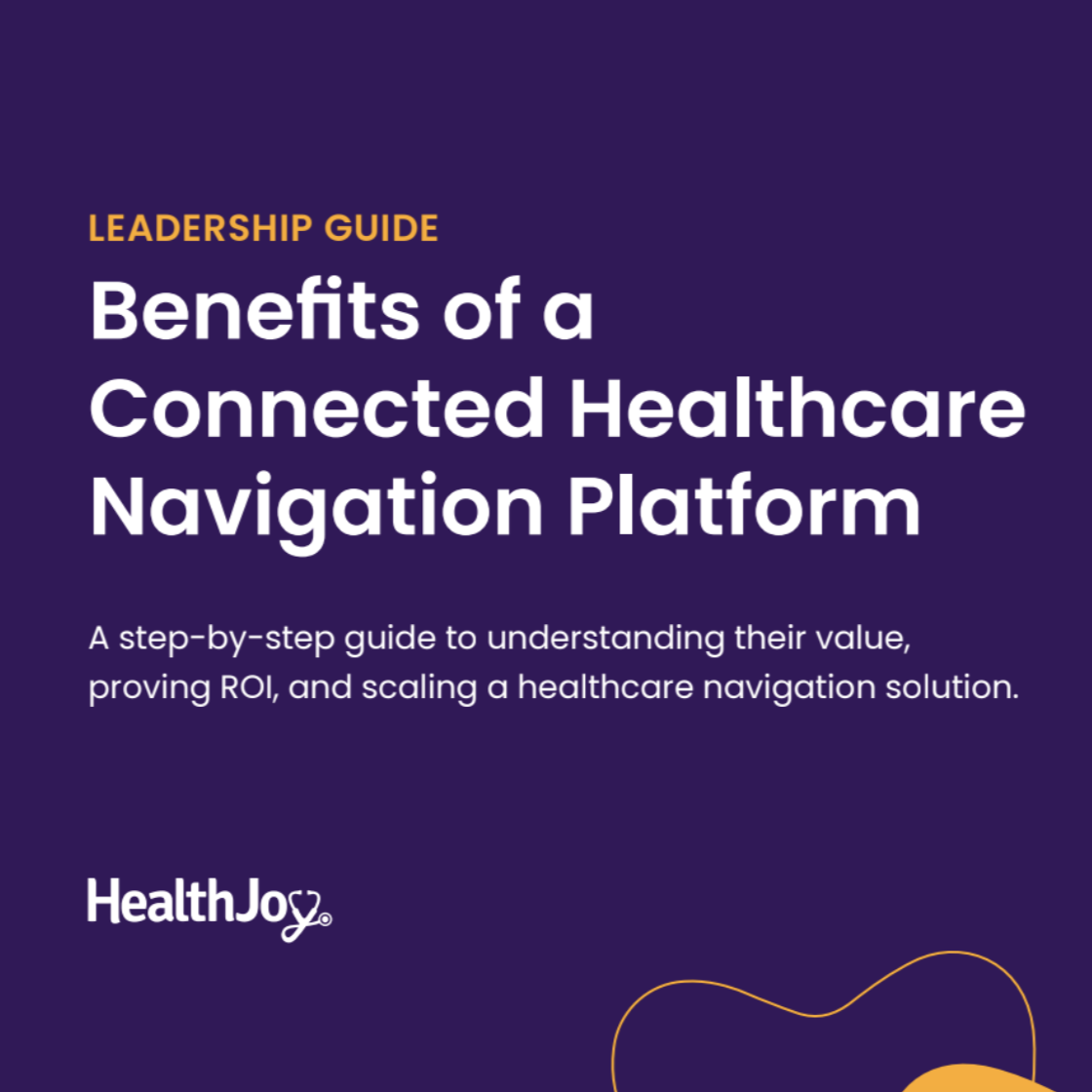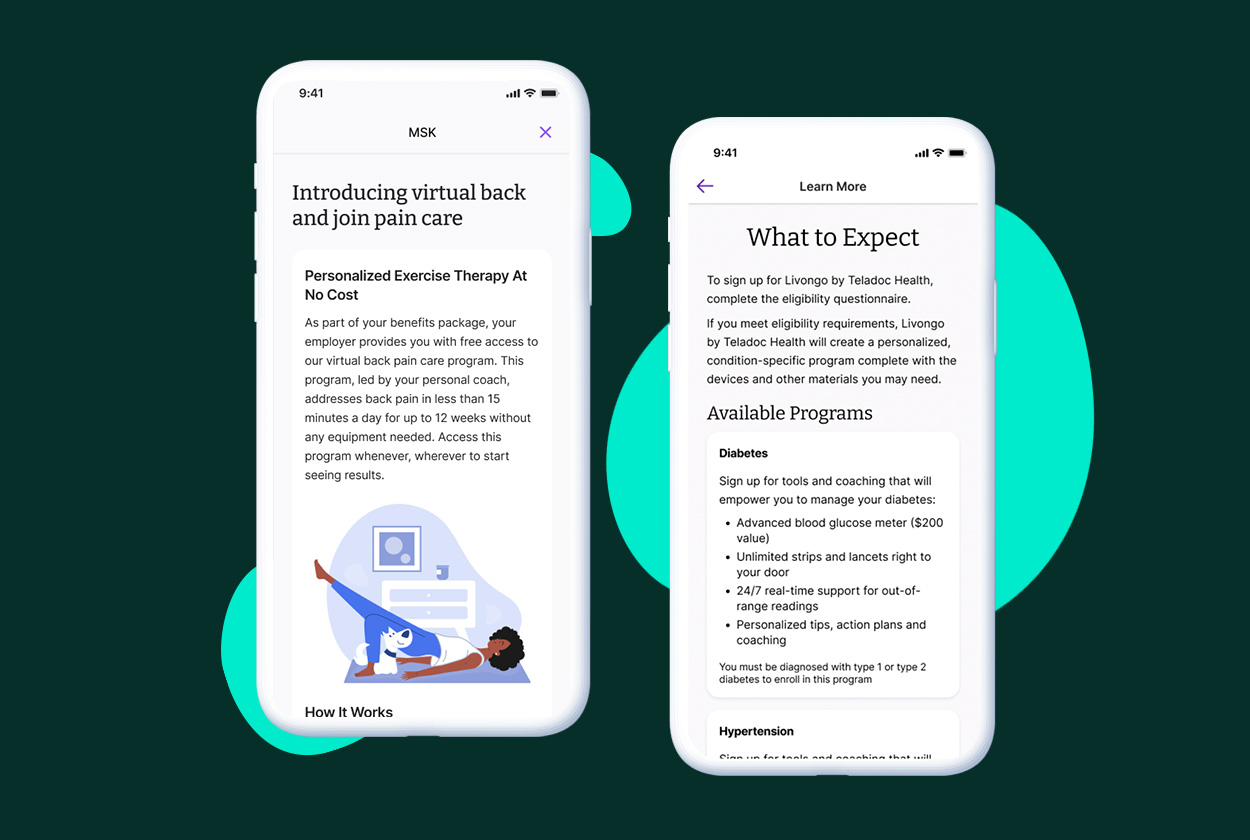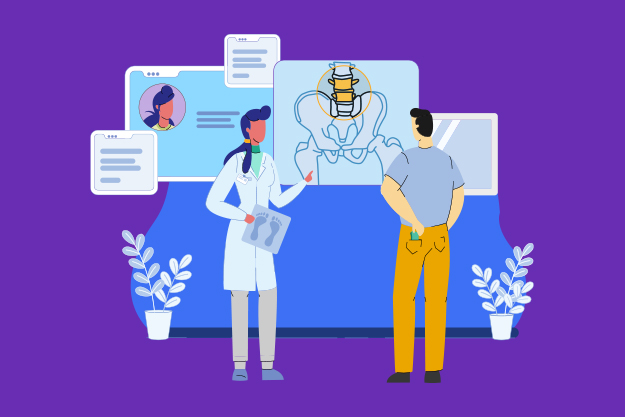The Renewal Reckoning: The Hidden Tax Threatening Your Clients in 2026
In the first two installments of our “Renewal Reckoning” series, we explored how brokers can thrive in a volatile market and how to turn the high...
Connected Navigation Platform
Guiding to high-value care
Behavioral Health
Foster a mentally healthy workplace
EAP
Supporting holistic wellbeing
Virtual MSK Care
Reimagining musculoskeletal care
Virtual Primary Care
Powered by smart navigation
Surgery Centers of Excellence
Best-in-class surgical outcomes
Virtual Urgent Care
Immediate care, any hour of the day
Chronic Care
A new approach to chronic care
Integrations
Flexible to any strategy
8 min read
 Melissa McDonald
:
January 30, 2024
Melissa McDonald
:
January 30, 2024

The US healthcare system is confusing, overwhelming, fragmented, and frustrating. For employees, the consequences of this unapproachable system can range from mild annoyance to financial devastation.
For employers, the financial stakes are also high.
Companies spend 30% of total headcount expenses on benefit programs, yet costly decisions and an opaque system make it harder than ever for anyone to see a return on that investment.
Healthcare is expensive for employees.
According to a 2023 Kaiser Family Foundation study, the average annual cost of employer-sponsored health insurance premiums per employee was $23,968 for family coverage and $8,435 for single coverage. According to the study, "the average annual single premium and the average annual family premium each increased by 7% year-over-year.
Companies are paying more too
With family coverage averaging $23,968, workers paid $6,575 — about 27% of the total cost — toward their premiums, while employers footed the remaining $17,393.
Employees don’t feel responsible for how their healthcare choices impact their employer’s bottom line.
Our 2021 Employee Benefits Insights Report surveyed over 1,500 employees and found that almost half of employees rarely or never consider how the cost of their healthcare choices impact their employer.
Employees don’t understand their healthcare benefits.
A survey from PolicyGenius found that fewer than one-third could correctly define “copay,” “deductible,” and “premium.”
Low healthcare literacy has a lasting impact on health outcomes.
In our 2021 Employee Benefits Insights Report, 40% of employer-insured consumers said they avoided care in the last year because they didn’t know what was covered. 29% avoided taking prescribed medication because of the cost.
Healthcare costs put your employees at risk.
For 2022, out-of-pocket maximums for families may reach as high as $17,400, yet the average American doesn't have $400 in savings.
Employers who want to lower their skyrocketing healthcare need a better way to help their employees get care. Point solutions won’t solve the problem, and education alone isn’t enough to prompt employees to make smarter healthcare choices.
To truly drive behavioral change, employers need an always-on, approachable tool that helps their people identify, access, and connect them with the care they need, when they need it.
They need a healthcare navigation solution.
Employees who don’t understand their benefits are likely to turn to costly options for care. For instance, they may choose a hospital imaging facility over a lower-cost standalone facility, simply because it’s in the same hospital network as the prescribing provider.
Lower health literacy is also associated with higher rates of ER visits. Emergency room visits typically cost more than outpatient urgent care facility visits, yet employees who don’t know where to find urgent care may turn to these solutions first. It’s estimated that $18 billion could be saved annually if patients with non-emergent conditions chose urgent care over the ER.
With a healthcare navigation solution, employees benefit from tools that make it easy to find the right care, including on-demand support, care redirection, and steerage to appropriate virtual and on-site care. Depending on available benefits, that could mean directing employees to virtual urgent care, prescription discounts, onsite clinics, or specialty care such as fertility solutions or cardio-metabolic care. HealthJoy clients regularly save hundreds per employee per year thanks to these features and products.
A healthcare navigation solution can prompt employees to remember preventive screenings and improve healthcare outcomes through early detection. Employees who don’t understand their benefits are avoiding or delaying care, and that leads to worsening health outcomes. Delaying a cancer screening leads to worse outcomes and, during the coronavirus pandemic, drove a higher rate of deaths, according to a study published in the journal Nature.
Encouraging employees to engage in preventive activities is about approachability. Employees put off these activities for myriad reasons, including fear, forgetfulness, lack of time, and low understanding. A navigation solution breaks down these barriers.
It not only reminds employees to take care of themselves, but also shows them how to do so. The right connected care experience can seamlessly transition employees from a push notification to scheduling an appointment without ever moving to another app or site. With tools like live healthcare navigation support and case management, they never have to walk through their healthcare journey alone.
A healthcare navigation solution isn’t just about finding savings on big-ticket items, like surgery or imaging. It can also prompt engagement with your preventive measures, like wellness programs, fitness challenges, and more. These programs head off higher costs but are often limited by low employee participation.
When you implement a fully connected navigation platform that’s integrated with your benefits package, you’ll gain access to tools that make your wellness benefits more approachable. Everything is easily displayed when they open the app, and push notifications can draw attention to your health and wellness initiatives more effectively than email.
With higher participation and engagement, your wellness programs can yield greater ROI and boost employee satisfaction. In other words, a healthcare navigation platform can make all your benefits more valuable.
When every piece is working together to make health and wellness easier, a healthcare navigation solution’s effectiveness should speak for itself. With the right solution, self-funded companies will notice a decrease in healthcare spending, as well as improved satisfaction, and benefits engagement from employees.
How powerful are the results?
Member engagement in our healthcare navigation solution saved one 4,900-employee HealthJoy client $154 per employee per year in 2021. That’s derived from nearly $350,000 in savings from healthcare concierge guidance, over $380,000 in savings from telemedicine steerage, and $22,000 in savings from medical bill reviews.
That number doesn’t even account for the nearly 2,500 hours saved by HR.
Employees don’t know how to find cost-effective care, which drives up both their out-of-pocket costs and your company’s expenses. Point solutions can address problems from different angles, but without a connected experience, they fall flat.
Here’s why.
Healthcare decisions are stressful.
Asking employees to make smart, informed choices at the time of a stressful healthcare event isn’t reasonable. Employees need support for every healthcare decision, throughout the year, without hours of research.
Point solutions don’t work together.
Employees must access a different site, download a different app, or call a different number for every resource. This siloed experience only increases confusion and frustration. As more point solutions flood the benefits landscape, there’s still a need for solutions that bring them together.
A fragmented benefits experience makes it harder for HR to meet their goals.
Juggling a maze of vendors is difficult for employees and your team. Each vendor requires a different implementation experience, provides a different level of support, and means a different navigation experience for employees.
How do we know it isn’t working?
Rising costs and frustration aside, you likely see it in your office every day. Despite investing in solutions, benefits professionals still spend an average of nine hours each week explaining benefits, according to our 2021 State of the Benefits Experience Report.
A healthcare navigation platform solves these problems. With a connected care solution at the center of their benefits experience, employees can intuitively find the right care at the right time.
Live, personalized guidance and an approachable interface make a confusing system more human. And when employees can make smart healthcare decisions with ease, healthcare costs go down — for them, and for your company.
However, many HR professionals may not know where to begin, how to evaluate solutions, or how to grow adoption among employees and leadership alike. We’re here to walk you through the why and how of implementing and scaling a healthcare navigation solution at your company.
To successfully evaluate and implement a healthcare navigation solution and see the greatest return on your investment, we recommend a three-step process.
Seeing is believing.
Rather than relying on cold statistics or estimated savings, evaluate and achieve buy-in for a healthcare navigation solution in a way that puts the full scope of its value on display.
Healthcare is human, and so is its impact. To make sure your organization can see its potential, your team can identify the pain points facing employees throughout their healthcare navigation journey. These are the things that create additional costs for the company and headaches for your department, and identifying them can help you build out a solution package that’s tailored to your needs — and toward creating meaningful return on investment (ROI).
Once you’ve identified the pain points the solution must address, it’s important that the full scope of the healthcare navigation solution is clearly identified and explained to key stakeholders. This is especially important if they weren’t involved in the buying process. At this stage, each integration, premium add-on product, and key feature should be detailed for them, along with its cost-savings potential.
Finding the unique solution that works best for your company and employees starts with identifying the problem.
Key Questions To Ask During This Phase
Once you know which elements of your healthcare navigation solution’s functionality will drive the most value, it’s time to evaluate how your vendor will work alongside you to quantify success. Now is also the time to make sure key stakeholders are aligned regarding how you’ll measure success.
At HealthJoy, our Customer Success team pays close attention to key metrics like activation rates and feature utilization. This helps us understand whether employees are seeing the value in our solution, and how successfully they’re integrating it into their day-to-day healthcare decisions. From there, you can evaluate and build a package that includes the features your employees need most.
After implementation, a customer success team should be able to provide access to regular reporting, progress toward your goals, and a game plan for hitting targets or correcting course. That support should follow you throughout the life of your vendor relationship, even as your employee population and its needs change.
Key Questions To Ask During This Phase
Once you’ve achieved buy-in and established success metrics, it’s time to begin tracking, quantifying, and expanding your healthcare navigation platform’s impact throughout the organization.
Successfully implementing a healthcare navigation solution means giving your employees the tools they need to fundamentally change their relationship with their healthcare benefits.
A truly connected experience built around a core platform minimizes confusion and frustration, creating a single source of truth for all your healthcare and benefits offerings. You should see immediate improvement from employees using features like live navigation support and virtual care solutions, as well as actions on customized notifications and reminders.
Once your healthcare navigation solution is established as the core of your benefits package, you can work alongside your solution provider to continue solving employee healthcare navigation problems with iterative solutions and products.
Key Questions To Ask During This Phase
Once your healthcare navigation solution has become a valued benefit for both the company and your employees, it’s time to work alongside your solution provider to explore additional products and services. Ones that are a good fit for your organization and will both raise employee benefits satisfaction and reduce healthcare costs even further.
HealthJoy’s platform helps more than 1,000 employers and their partners bring benefits strategies to life.
We make all benefits–regardless of vendor–feel like a single experience for employees. HealthJoy goes the extra mile by building out layers of technical and operational integrations that make all actions feel seamless.
This makes it simple for employees to discover the best providers, virtual care, and savings opportunities so they can lead happier, healthier lives.
If you’re interested in learning more about what HealthJoy can do for you, we’d love for you to join us at our next monthly Product Demo Webinar.
You’ll experience HealthJoy during a full demo where you will:
-1.png)
In the first two installments of our “Renewal Reckoning” series, we explored how brokers can thrive in a volatile market and how to turn the high...

Suffering from a musculoskeletal (MSK) condition can make it feel like you’re on the sidelines in your own life. This pain can take you away from the...

Chronic pain is an expensive problem. Musculoskeletal-related conditions account for $213 billion in annual treatment, care, and lost wages, making...